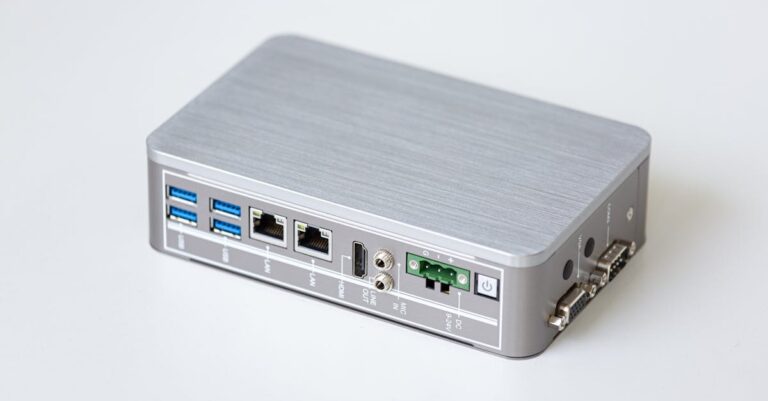Table Of Contents
The Significance Of Cables And Wiring In Broadband Networks | Unveiling the Importance of Cables and Wiring within Broadband Networks
Key Takeaways
- Importance of Cabling in High-Speed Networks
- Delving into Broadband Cable Technology
- Types of Network Cables Explored
- Impact of Cables on Network Efficiency
The Significance Of Cables And Wiring In Broadband Networks | Understanding the Importance of Cables and Wiring in Broadband Networks
The Significance of Cables and Wiring in Broadband Networks is paramount for ensuring efficient data transmission and network performance. Broadband cables, such as ethernet cables, play a crucial role in establishing reliable connections within cable networks. These network cables are the backbone of cable broadband systems, facilitating seamless communication and high-speed internet access. Understanding the importance of cabled networks is essential for maintaining the integrity and speed of broadband connections. Telecommunication cables are integral components of cable internet, underscoring the significance of a well-structured cable network. Evaluating the quality of networking cables is key to optimizing broadband connections and enhancing overall networking efficiency.
The Significance of Cables and Wiring in Broadband Networks | The Role of Network Cables in Data Transmission
In broadband networks, the significance of cables and wiring cannot be overstated. These essential components form the backbone of the cable system that enables data transmission across various telecommunications networks. From ethernet cables to cable ties, each wire plays a crucial role in establishing a reliable broadband connection. Cable operators rely on sturdy wiring and electrical connections to provide seamless cable services to users, making the quality of the wiring an integral part of the overall network performance.
The Significance of Cables and Wiring in Broadband Networks extends beyond just connecting devices; it directly impacts the efficiency and speed of data transmission. Cablelabs, a research organization focusing on cable technologies, continuously strives to enhance the capabilities of cable TV and broadband networks by improving the quality of wires used. By understanding the technical aspects of different cable types and ensuring proper installation, users can experience faster internet speeds and more stable connections, highlighting the vital role that cables play in modern broadband infrastructure.
Evaluating the Quality of Your Cable Broadband Network
To evaluate the quality of your cable broadband network, it is essential to consider the various types of cables and wiring used in such networks. From copper cables to fiber optic cables, the choice of cables can significantly impact the efficiency and speed of broadband connections. Ethernet crossover cables facilitate direct communication between devices, while patch cables are commonly used to connect different components within a network. Fiber-optic cables, known for their high data transmission capacity and reliability, play a crucial role in modern broadband networks, ensuring efficient data transfer for residential and commercial users alike.
In addition to cable types, the maintenance and installation of cables in a broadband network are vital for optimal performance. With advancements in technology, the use of fiber cables has become increasingly common in broadband networks, offering faster and more reliable connections compared to traditional copper cables. Telecommunications and cable television industries heavily rely on high-quality cables to deliver seamless connectivity to their customers. By understanding the significance of cables and wiring in broadband networks, users can assess the quality of their cable broadband network and make informed decisions to enhance their telecommunications experience.
Why Cables and Wiring are Key to a Broadband Network’s Efficiency
The Significance of Cables and Wiring in Broadband Networks cannot be overstated when it comes to ensuring the efficiency of a network. Various types of network cables play a crucial role in facilitating the connectivity and data transmission within a cable broadband network. UTP cables, optical cables, patch cables, and Ethernet networks are all essential components that contribute to the seamless operation of a cable broadband network. Understanding the significance of cables and wiring in broadband networks is fundamental to maintaining a reliable and stable internet connection—cables are the backbone of the cable broadband infrastructure.
Properly selecting and maintaining the major network cables is vital for optimizing the performance of a cable broadband network. By adhering to network cables specifications and choosing the right types of cables for a cabled connection, it ensures a robust and efficient operation of the network equipment. The quality and reliability of the network cable types directly impact the speed and stability of cable broadband connections. A well-established cable broadband network not only relies on advanced technology but also heavily on the proper installation and maintenance of the cables and wiring to ensure seamless internet connectivity.
Diving Deeper into Cable Broadband Technology
The Significance of Cables and Wiring in Broadband Networks is paramount in understanding the intricacies of cable broadband technology. Cable networks today rely heavily on wired broadband infrastructure that uses hardware like cables or wires to connect devices to the internet. The global cable broadband segment is evolving rapidly, with advancements in pair network cables and stp network cables enhancing cable broadband performance. The current cable broadband industry connects millions of users worldwide, offering a seamless cable broadband experience. Exploring the technical aspects of cable access networks sheds light on how straight cables play a crucial role in optimizing cable broadband speed and efficiency.
The Technical Aspects of Cable Broadband Networks
Cables and wiring play a crucial role in the functioning of broadband networks. The Significance of Cables and Wiring in Broadband Networks cannot be overstated, as they are the backbone of these networks, facilitating the transmission of data and information. Different broadband connections rely on various cable types, including ethernet/copper cables, pair cables, and line cables. With advancements in cable technology, cable broadband subscribership has surged, with many opting for cable internet service due to its reliability and speed. As cable broadband technology evolves, new cables are constantly being introduced to enhance broadband communications networks, offering subscribers faster speeds and better connectivity.
Understanding the technical aspects of cable broadband networks is essential for optimizing performance and reliability. Initial cable broadband installations involved mainly ethernet/copper cables, but advancements have led to the development of more efficient cable types. Subscribers are now able to choose from a variety of cable deals, each offering its own cables designed to meet specific connectivity needs. Wired networks continue to dominate the broadband landscape, with the efficiency and stability of cable connections making them a preferred choice for many. Evaluating the quality of cable accounts for a significant part of ensuring the seamless operation of broadband networks, highlighting the continued importance of The Significance of Cables and Wiring in Broadband Networks.
How Cable Broadband Technology Enhances User Experience
With the rapid advancement of cable broadband technology, the user experience has been greatly enhanced in broadband networks. The significance of cables and wiring in broadband networks cannot be overstated as they form the backbone of the wired network infrastructure. Cable lines play a crucial role in providing reliable broadband connectivity, and the cable industry is continually evolving to meet the increasing demands for faster speeds and greater reliability. From mainline cables to distribution cables, the installation of wires is meticulously planned to ensure optimal performance. The variety in cable lengths, such as pair cables and optic cables, caters to the diverse needs of consumers, making cable service interfaces more efficient and user-friendly with next-gen cable technology like fiber cables.
In the realm of cable broadband technology, user experience is further enriched by the seamless integration of wireline connections. The significance of cables and wiring in broadband networks lies in their ability to support high-speed internet access and facilitate smooth data transmission. Through the innovation of next-gen cable technology, such as fiber cables, broadband networks can deliver faster speeds and improved reliability to users. By optimizing the performance of distribution cables and pair cables, users can enjoy a more consistent and robust internet connection. The evolution of cable service interfaces, coupled with advancements in optic cables, has revolutionized the user experience, making broadband connectivity more accessible and efficient than ever before.
Insights into the Fast Pace of Cable Broadband Speeds
The significance of cables and wiring in broadband networks cannot be overstated, as they form the backbone of the vast broadband infrastructure that connects millions of users worldwide. Cable serves as the conduit through which data travels from one point to another, facilitating network connections for typical cable subscribers. CableLabs delivers innovative solutions to enhance cable broadband subscriptions, ensuring that wired infrastructure meets the growing demands for speed and reliability. Ethernet cable buying guides help users choose the appropriate cable for their needs, with Ethernet cable identification tools simplifying the process for cable customers.
The fast pace of cable broadband speeds is a result of continuous advancements in cable technology, reducing cable losses and improving transmission efficiency. Flexible cables enable seamless data flow, enhancing the overall user experience and driving the evolution of broadband networks. As cable broadband continues to evolve, staying informed about the latest developments in cable technology is crucial for maximizing network performance and ensuring a seamless connection for users.
| Cable Type | Speed (Mbps) | Maximum Length (meters) | Best Use Case |
|---|---|---|---|
| Cat 5e | 1,000 | 100 | Home networking and small offices |
| Cat 6 | 10,000 | 55 | High-speed data transfer and gaming |
| Cat 6a | 10,000 | 100 | Data centers and enterprise networks |
| Cat 7 | 10,000+ | 100 | Future-proofing and professional setups |
Exploring the Different Types of Network Cables
Exploring the Different Types of Network Cables delves into the intricacies of cable varieties crucial for broadband networks. The Significance of Cables and Wiring in Broadband Networks is paramount as the cable business continues to underpin broadband network services globally. From transmitting cable television signals to deploying one’s cable infrastructure, understanding the diversity of cable structures is essential for optimizing broadband systems. Technologies like multi-gigabit cable and copper wire connections are revolutionizing broadband communications, while insights from cable installation guides ensure the effective deployment of expensive yet top-performing cables. Whether it’s for short patch cables or intricate network setups, the global cable industry remains at the forefront of advancing broadband technologies.
Identifying the Various Network Cable Types
To fully comprehend The Significance of Cables and Wiring in Broadband Networks, it is crucial to distinguish between the various network cable types. From optic cables to high-speed cables, each cable plays a vital role in ensuring efficient data transmission within broadband networks. For global cable subscribers and large cable providers like American Cable Systems, selecting the appropriate cable materials is paramount in maintaining a reliable broadband access network. Unprotected cables can lead to compromised broadband coverage, affecting everything from home broadband connections to computer network connections. Hence, understanding the different cable options available is essential for optimizing broadband generation.
In the realm of broadband networks, protecting cables is a top priority. Cable protectors serve as guardians against potential damages that could disrupt the seamless flow of data transmission. By carefully considering the cable chosen for installation in broadband networks, points broadband can avoid interruptions in service and ensure steady broadband coverage. The selection of the right cable type is fundamental to the efficiency and longevity of a broadband network. As technology advances and the demand for faster speeds increases, the reliance on high-quality cables becomes even more critical in enhancing broadband performance.
Pair Network Cable: An Indepth Look
Pair network cables play a crucial role in broadband networks, showcasing The Significance of Cables and Wiring in Broadband Networks. These cables are meticulously designed to transmit broadband signals efficiently, acting as a bridge between network devices. When it comes to broadband technologies, pair network cables stand out for their reliability and performance. Compared to other cable types, these lower-loss cables ensure that broadband signals reach their destination without interference, making them a preferred choice for cable operators and broadband service providers.
In fiber/coaxial-cable networks, pair network cables are instrumental in enhancing broadband capacity. By adhering to perfect cable dimensions and specifications, these cables facilitate the seamless transmission of broadband data. Cable operator members rely on pair network cables to deliver high-speed internet as part of their broadband programs, ensuring that customers receive a reliable and fast broadband package. Pair network cables serve as the backbone of broadband technology, consistently supporting the smooth flow of data within fiber/coaxial-cable networks.
Choosing the Right Cable Type for Optimum Broadband Performance
The Significance of Cables and Wiring in Broadband Networks cannot be understated. From the basic wiring standards to the specialized coaxial-cable distribution systems used by cable television companies, each component plays a crucial role in ensuring optimal broadband performance. Whether it’s the right copper cable for interconnected networks or the optical cable dielectric for high-speed connections, broadband basics rely heavily on the quality and efficiency of the cables that link networking equipment and devices.
In the realm of broadband technology, choosing the right cable type for optimum performance is paramount. Various cables such as drop cables and pair network cables are designed to enhance networking communications and support the seamless flow of data across interconnected networks. Understanding the specific requirements of your network and selecting the appropriate cables can significantly boost the efficiency and reliability of your broadband infrastructure.
- Consider the bandwidth requirements of your network to determine the cable type needed
- Evaluate the distance limitations of different cable types to ensure effective transmission
- Take into account the environmental factors where the cables will be installed
- Prioritize reliability and durability when selecting cables for your broadband network
- Seek professional guidance or consult with experts to choose the most suitable cable type for your specific needs
How Cables Impact Broadband Network Efficiency
To truly grasp how cables impact broadband network efficiency, it’s essential to recognize The Significance of Cables and Wiring in Broadband Networks. The quality of network cabling plays a crucial role in determining the overall performance of broadband services for users. Whether it’s rigid cables for stability or coaxial cable technology for enhanced signal transmission, the right network setup ensures a seamless connection. Broadband America relies on effective broadband policies and superior network capabilities to meet the demands of broadband subscribers. From multimode cables that enhance network signals to the way broadband connects homes to fiber cabinets, the intricate network of cables is the backbone of efficient broadband performance, enabling smooth connectivity for various electrical devices and enhancing the online experience for broadband users.
Conclusion
To truly grasp the significance of cables and wiring in broadband networks, it’s essential to understand the pivotal role they play in ensuring high-performing internet connectivity. These network cables act as the foundation of a reliable broadband network, with even the smallest details like the quality of telephone-grade wire making a substantial impact on the overall efficiency of the system. By evaluating and selecting the appropriate cables for your broadband setup, you pave the way for superfast broadband connections that not only meet but exceed the expectations of users. When delving into the technical aspects of cable broadband networks, it becomes evident that the actual internet connection speeds heavily rely on the type and quality of cables used. In this broadband guide, the emphasis is on how the right cables and wiring can significantly enhance user experience by contributing to seamless data transmission and swift internet speeds, making them indispensable components for creating efficient broadband networks.
FAQS
How do fibre optic cables improve broadband network performance compared to traditional cables?
Fibre optic cables, unlike traditional cables such as twisted pair or telephone wire, use light to transmit data signals instead of electricity. This results in faster and more reliable data transmission, making fibre optic cables ideal for supporting high-speed internet connections in broadband networks.
What role do cables and wiring play in broadband networks, and how do they differ in types and functionalities?
Cables and wiring are fundamental components in broadband networks, crucial for ensuring the transmission of data signals from one point to another. There are various types of cables used in broadband networks, such as fibre-optic cables, twisted pair cables, and coaxial cables. Each type serves a specific purpose, with fibre-optic cables being known for their high speed and bandwidth capabilities, especially over long distances. On the other hand, twisted pair cables and coaxial cables are more commonly used in traditional telephone and cable networks. The choice of cable type in a broadband network depends on factors like speed requirements, distance, and cost considerations. Overall, cables and wiring form the backbone of broadband networks, enabling the seamless flow of data to and from various connected devices and systems.
What purposes do cables and wiring serve in the context of broadband networks, and how do they differ in functionality and types?
Cables and wiring play a crucial role in broadband networks by facilitating the transmission of data and connecting various networking devices. There are different types of cables used, such as fiber optic cables and coaxial cables, each with its own set of functionalities and benefits. Fiber optic cables, for example, are known for their high-speed data transmission capabilities and resistance to electromagnetic interference, while coaxial cables are commonly used for transmitting cable television signals. The choice of cable type can impact network performance and reliability, making it essential to select the most suitable option based on specific connectivity needs.
What is the role of cables and wiring in broadband networks, and how do they impact network performance?
Cables and wiring play a crucial role in broadband networks by facilitating the transmission of data signals. The type and quality of cables, such as fiber optic cables or traditional copper cables, directly impact the network’s performance in terms of speed, reliability, and bandwidth capacity. Opting for high-quality cables and proper installation can significantly enhance the efficiency and reliability of broadband connections.
How do different types of cables impact the performance of broadband networks?
Various types of cables, such as fiber optic cables, coaxial cables, and power wires, play a significant role in the performance of broadband networks. Fiber cables, for example, offer high-speed data transmission, while coaxial cables are commonly used for cable modems in providing internet services. The choice of cables in broadband networks can impact factors like speed, reliability, and overall network performance.
How important is the installation of cables in broadband networks, and what role do they play in improving network performance?
Cables play a vital role in broadband networks by allowing data to be transmitted efficiently and reliably. The type and quality of cables used can significantly impact the network’s performance. Fibre optic cables, for example, are known for their high speed and reliability compared to traditional cables. Investing in high-quality cables is essential for ensuring a smooth and fast broadband connection.
What role do cables and wiring play in broadband networks, and how do they impact network performance differently based on the type of cable used?
Cables and wiring are crucial components in broadband networks as they are responsible for transmitting data between different network components. The type of cable used can significantly impact network performance. For instance, fiber optic cables offer higher bandwidth and faster data transfer speeds compared to traditional copper cables, making them ideal for high-demand applications in modern broadband networks.
How do cables and wiring contribute to the efficiency of telephone and internet networks?
Cables and wiring play a crucial role in supporting telephone networks and internet connections. The type of cable used varies depending on the network’s requirements. For instance, fiber optic cables are known for their high-speed data transmission capabilities, making them ideal for broadband communications technology. On the other hand, copper cables are commonly used in traditional telephone networks. By installing the appropriate cables, telecommunication companies can ensure reliable and efficient connectivity for users.
How does the type of cable used impact the efficiency and performance of broadband networks?
Different types of cables, such as fiber optic cables or coaxial cables, can significantly impact the efficiency and performance of broadband networks. Fiber optic cables, for example, offer higher bandwidth and faster transmission speeds compared to traditional copper cables, making them ideal for high-speed internet connections. On the other hand, coaxial cables are commonly used in cable television and provide reliable connectivity for broadband services. Choosing the right type of cable is crucial in ensuring the optimal performance of broadband networks.
How do different types of cables impact the efficiency and performance of broadband networks?
Different types of cables, such as fiber optic cables and traditional copper cables, play a crucial role in the efficiency and performance of broadband networks. Fiber optic cables, known for their high-speed data transmission capabilities and resistance to interference, contribute to faster and more reliable internet connections. On the other hand, traditional copper cables, while being more widely available and cost-effective, may not offer the same level of performance as fiber optic cables in terms of data speed and reliability. Therefore, the type of cable used directly impacts the overall efficiency and performance of broadband networks.







